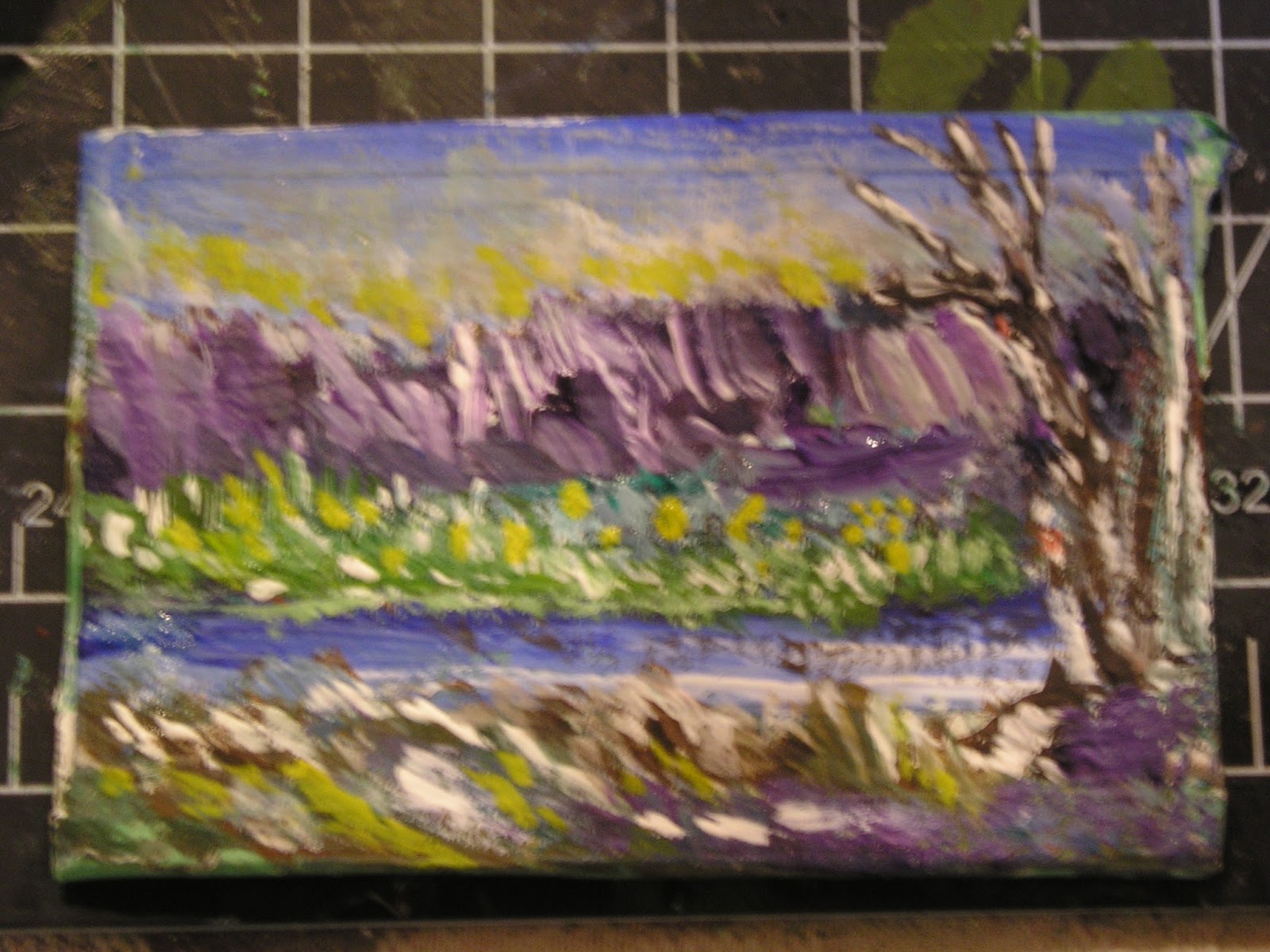 |
| A Claudia Hansen Post Impressionism piece "Summer" |
The right brain took over right there, did you notice?
Occasionally I get an overwhelming urge to paint. This summer I even did a little "en plein air", loading my packsack with paints and such, and headed out to a nice little beach where I painted the morning away. I was finally chased off by an impending storm, but what a rush. I was told later that "en plein air" is "hard". Good thing nobody told me that first. Okay, granted, you deal with weather, stuff falling in your paints, small children using the bush you are currently painting as an impromptu washroom, etc., but nothing can compare with the feeling, and what inspiration can be had sitting outside, soaking up the day and the wonders (outside of the red faced parent rushing little Billy and his nervous bladder off out of your line of sight, of course).
I felt like doing a little painting (did you see what I did there? No? Well, you will ) this weekend. Unfortunately, I am not prepared to sit outside today as it is December out there, and when your paints freeze it makes it a bit difficult to be creative.
My journey started with a canvas. This past summer I happened across some very nice little prepared canvases, just the right size, that I bought from a large box store specializing in crafts, and dreamed and plotted what I was going to do with the sweet find. Admittedly, I have no idea what I have done with them since, so I fell back on my extensive grade 10 art class training (translation - we spent a whole hour on it) in "how to prepare a canvas".
 |
| Stock Wood from Hobby Supply Store |
 |
| Drawing out a pattern |
 |
| Frame lines and stock wood for frame |
 |
| Wood with painter's tape |
 |
| Gesso'd canvas |
 |
| Sketchy-sketchy |
 |
| Adding the Sky |
 |
| Adding the water |
 |
| Adding Mountains and background |
 |
| Adding interest |
Having gotten to the point where I could rush headlong into the details, I started to play. One thing about painting is that you have to be strong enough to walk away before you go overboard - I think today I didn't quite walk away in time. Still, no biggie. You don't learn if you don't try.
 |
| Painter's tape removed |
A note on paint choice - acrylics tend to be a more forgiving medium, in that it is easy clean up, minimum fumes, and a little easier to work with. Oils take a long time to dry, but the blending opportunities are amazing. Water colours are a difficult choice of medium to work with, but the effects can be worth the effort. In short, its up to you, bub, which one you want to play with.
 |
| Cutting out my frame |
 |
| Mitre Tool and painting being framed |
 |
| Framed! |
I found something on Youtube that is great inspiration as well - this painter does break the "not too many details" rule...beautiful!
Have a great New Years, and we will see you in 2013!


No comments:
Post a Comment